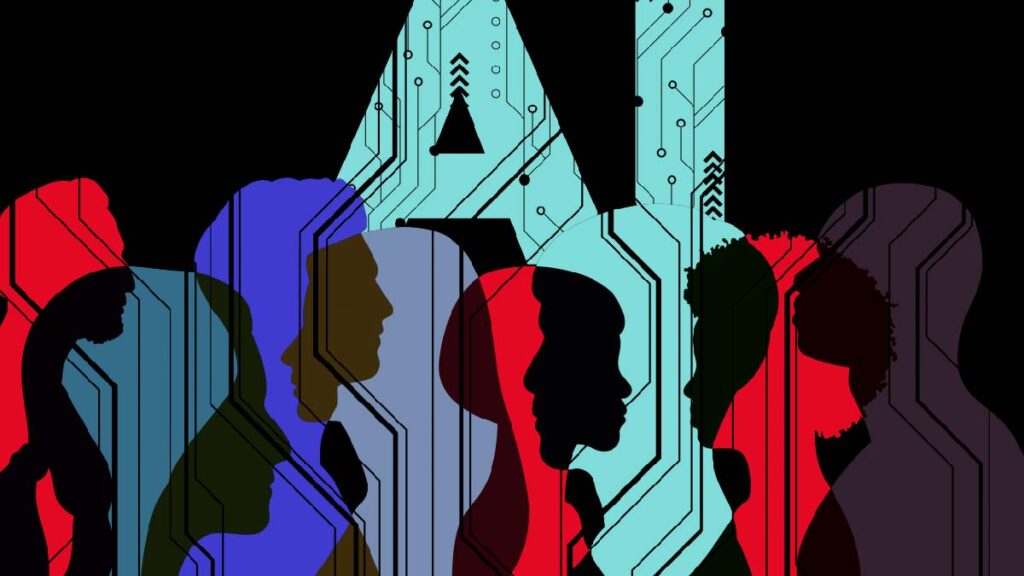Human Centered AI: The Ins and Outs

What is Human-Centered AI?
Human-centered AI is backed up by human collaboration and input, focusing on algorithms in a more human-based approach. It is represented by systems continuously enhancing because of human information while delivering a valuable experience between humans and robots.
Humans are coming into contact with AI and machine learning systems. Human-centered artificial intelligence (AI) is a combination of AI and machine learning (ML) in which algorithms must be developed.
This system can be divided into two aspects: first, AI systems that understand humans from a sociocultural perspective, and second, AI systems that help humans understand them. By designing machine intelligence to comprehend human emotion, language and behavior, human-centered AI drives the boundaries of formerly biased AI solutions to bridge the gap between machines and humans.
From a business perspective, human-centered AI solutions use qualitative data and human science to understand the more serious aspirations, needs, and drivers that underlie customer behaviors in the market.
For this to succeed and become applicable, AI needs human intervention where humans can include criteria that robots don’t have such as introducing creativity and compassion, providing governance, data collection, and manipulation amongst others.
Human Input
Human input is the main element in the building and designing process of human-centered AI. This technique takes advantage of the strengths of both humans and machines, allowing them to collaborate in a matter that mutually reduces blind spots. Human-centered AI is designed to bear in mind people’s well-being, focusing on technologies that will merge into our lives to improve our overall experience and bridge the gap between humans and machines for the benefit of both parties.
Human-centered design is also an essential aspect, as AI applications must reflect real pictures of user needs and human psychology. The user-centered design pioneer, Don Norman, elaborated on the matter, highlighting that “AI needs to accept human behavior the way it is, not how we would wish it to be.”
For example, the proof that AI is helping people is that Microsoft Corp’s LinkedIn platform boosted subscription revenue by 8 percent after arming its sales team with AI software that predicts clients at risk of cancellation.
Intelligent technologies rarely cause ingenious outcomes unless they are organized to enable smart adoption on the part of human end users. For example, adding more competent people to a team can erase its significance, and so can AI result in “artificial stupidity” if poorly implemented, designed, or adapted to the human social context.
However, regular AI also has some flaws, including when some driverless cars face problems related to the automation system based on AI. The U.S. government opened a formal investigation in May 2021 into Tesla’s Autopilot partially automated driving system after many collisions with parked emergency vehicles.
Human-Centered AI Design
We can find many ways that show how human-centered design makes AI effective.
Goal-relevance: AI and data science product applications are most helpful when organized to fulfill the needs of human end users. For example, when typing “area of Poland” into the search engine, Bing returns the literal answer (120,728 square miles) with the note: “About equal to the size of Nevada.” The numeric answer is the more accurate, but the intuitive solution conveys the approximate size of Poland too far more people.
Another example, people searching for jobs have been talking to computers recently to conduct interviews.
Handoff: Many AI systems can run on “autopilot” but need human intervention in exceptional situations requiring common sense or contextual understanding. Human-centered design is necessary to ensure that this “handoff” from computer to human occurs when it should and that it goes smoothly.
“The paradox of automation” is that when we get more reliant on technology, people are less ready to take control in the unusual cases when the technology fails.
Human-Centered Explainable AI: Towards a Reflective Sociotechnical Approach
A form of post-hoc interpretability plays an instrumental role in making systems accessible as AI continues to increase complex sociotechnical systems.
Computational sensing for human-centered AI is a theory that puts humans at the center of technology design. It creates a holistic understanding of “who” the human is by evaluating the interplay of interpersonal values, dynamics, and AI systems’ socially situated nature.
This strategy helps us understand our intellectual blind spots, and opens up new design and research spaces. It also helps people interpret how the AI algorithm is providing results and makes human centered approaches more accurate.
Summary
Humans created robots and collaborated with them for 20 years while evolving daily, adding AI to them and making them as close to human intelligence as never before and even more intelligent.
This factor led humans to depend on robots in many fields to complete assignments that take more effort from humans in parallel with getting the best quality output.
Inside Telecom provides you with an extensive list of content covering all aspects of the Tech industry. Keep an eye on our Artificial Intelligence section to stay informed and updated with our daily articles.
